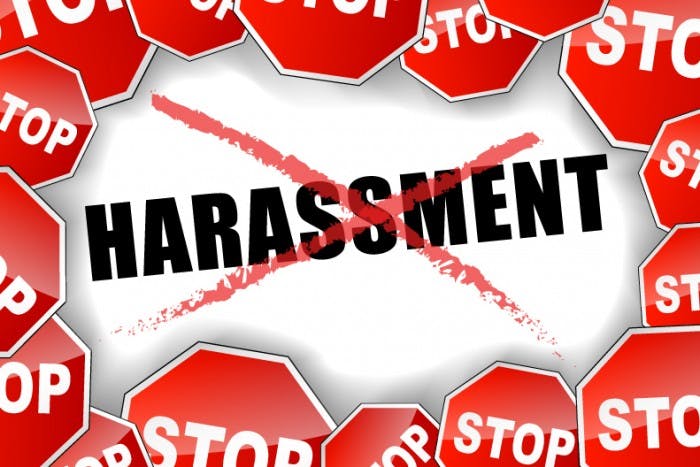Harassment is a form of discrimination based on a protected class that is prohibited by law.
Harassment in the workplace has seen a renewed focus because the list of protected classes has expanded and technology such as social media and smart phones has created more channels for potential abuse.
Many business owners do not realize that harassment policies apply to not only employees, but also to customers, vendors and others that we interact with inside and outside of work.
Here in Massachusetts, as in many other states, protected classes include:
- Race;
- Color;
- National origin;
- Religion;
- Sex;
- Disability — physical or mental;
- Age (40 and older);
- Genetic information;
- Marital status;
- Sexual orientation;
- Military service;
- Arrest record;
- Gender identity.
Harassment in the workplace is illegal and your business may be subject to a lawsuit if unwelcome conduct:
- Becomes a condition of continued employment;
- Becomes so severe that the work environment is viewed as intimidating, hostile or offensive to reasonable people.
According to the EEOC:
Offensive conduct may include, but is not limited to, offensive jokes, slurs, epithets or name calling, physical assaults or threats, intimidation, ridicule or mockery, insults or put-downs, offensive objects or pictures, and interference with work performance.”
Read more about harassment from the Equal Employment Opportunity Commission.
In Massachusetts, companies with six (6) or more employees are required to have a written non-harassment policy and are required to disseminate it at hire and once annually.
Types of harassment in the workplace
Sexual harassment is the most common form of harassment.
Example: Mary Jones is demoted because she refused to go out with her supervisor, James Smith.
Similar actions and behaviors based on the other protected classes are also harassment. Although sometimes subtle, it remains important to be on the lookout for these types of activities:
- An email “going around” that makes fun of an employee’s sexual orientation.
- An employee who posts a racist cartoon at their cubicle.
- Derogatory comments made about a customer’s religion.
- Rude treatment of a vendor because of their gender or perceived sexual orientation
It should be noted that an employer will be liable for harassment by non-supervisory employees or non-employees over whom it has control (e.g., independent contractors or customers on the premises), if it knew, or should have known about the harassment, and failed to take prompt and appropriate corrective action.
Stamping out workplace harassment
What can the business owner, HR or payroll professional do to guard against harassment in your workplace?
- Communicate policies and train your employees about harassment. Employers are vicariously liable for the actions of their supervisors, and supervisors can be held personally liable as well.
- Ensure that you have proper reporting mechanisms/procedures for employees to report issues. A well-crafted policy will indicate designated contacts at the company to formally receive complaints.
- Constantly monitor the workplace for potential problems. While a harassment policy covers actions based on the protected classes, businesses may want to also consider an anti-bullying policy to capture any other inappropriate behavior of a harassing nature.
- Correct harassment in the workplace quickly and with appropriate actions. All employees share the responsibility of creating and maintaining a work environment that is respectful of others – make sure they know it.
This was originally published on the MassPay blog.
